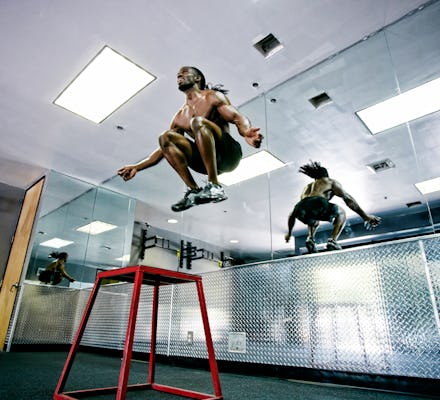4

4-second spurts of exercise appear to do wonders, researchers say
Recent research shows that the number one reason people say they don’t exercise is that they don’t have enough time. Even though it’s easy to wonder how much time those same people spend on, say, TikTok, even the most fitness-obsessed (it me) among us have a hard time fitting in workouts. But it turns out that our favorite excuse doesn’t hold up in the face of science, because a new study suggests that we really don’t need that much time. It’s high intensity interval training (HIIT) to the rescue once again: Apparently, doing intervals of short, four-second exercises has surprising health benefits.
The research, which was published in July in the journal Medicine & Science in Science & Exercise, looked at the effects of short bursts of power cycling — a.k.a. pedaling really fast on bikes with heavy weights.
Researchers on this small but meaningful study (11 participants) found that peak levels of aerobic effort could be reached within four seconds, the New York Times reported. When the exercises were repeated 30 times — with a 15-30 second rest in between bursts — three times a week for eight weeks, participants's aerobic fitness went up 13% and their muscular power increased 17%, reported the Times. The workouts lasted from 10-17 minutes, which is longer than 4 seconds, but shorter than an episode of Broad City.
The people involved in the study didn’t do any other exercise in those eight weeks, either. To put this in context, what this means is that the volunteer’s fitness increased by exercising less than 45 minutes over an eight-week period. To be fair, the participants were young and healthy, so they already had some advantages.
All of this bodes well for the future of HIIT, which has been abundantly lauded as an efficient, effective way to work out for a few years now. HIIT workouts are short — usually 20-30 minutes — intense, and very trendy. Athletes actually have been using interval training since the 1930s, but is an approach to fitness that has definitely been gaining traction in the past decade.
Another recent study, led by the same researchers at University of Texas, studied young people who did four-second repetitions on the bikes every hour throughout an eight-hour workday. That study found that the metabolism boost the participants gained during those short intervals caused them to keep burning fat throughout the following day, even if they were totally sedentary, reported the Times. Another trial looked at older adults — aged 50 to 68 — and found that similar training increased their fitness levels by about 10%.
Before you put your phone down and start box-jumping, you should know that interval training is not without risk. Some experts think that doing too much HIIT may have an adverse effect on your body’s ability to regulate blood sugar and that the speed of HIIT may increase the likelihood of injury. Not only that, but now we have to worry about fakes, because it turns out that many of the most popular HIIT workouts aren’t actually high intensity.
And I don’t know who needs to hear this, but you can’t significantly improve your overall health if you only move a few minutes a day. The researchers involved in the study don’t want people to misuse their findings or get the wrong idea about how to stay healthy. “In general, it’s going to be a good idea to get up and move around throughout the day,” Edward Coyle, professor of kinesiology at the University of Texas at Austin and co-author on the study, told the Times.
Still, the research on HIIT is very valuable, because it seemingly answers the age old question, “How much do I have to work out to look hot and feel amazing?” If the answer is only four seconds at a time, I am definitely in.